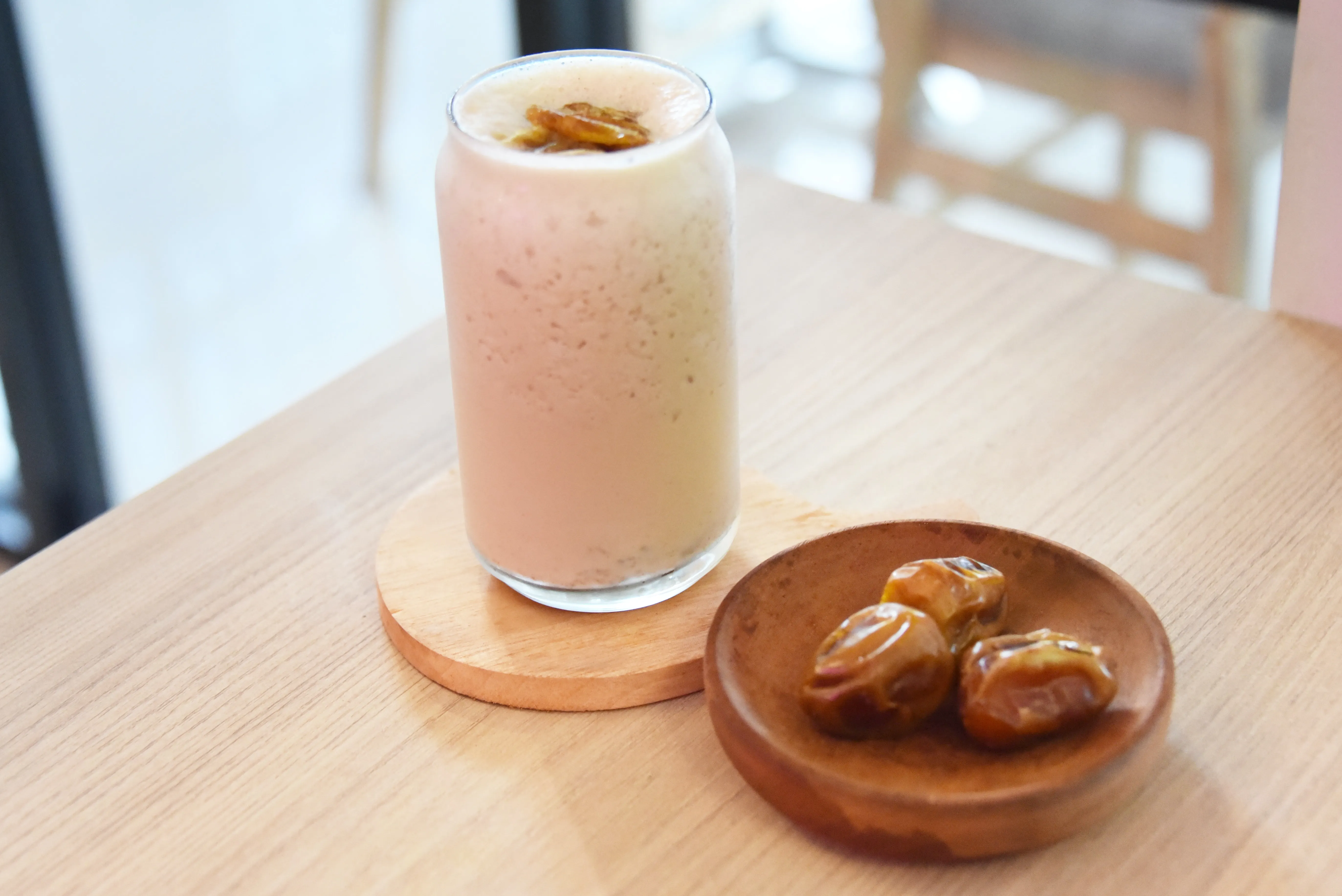Bsissa Bliss
A Nutrient-Rich Journey Through History

[Toc]
Simplicity comes in many disguises and throughout the Sensibly Selfish website, you will encounter many posts based on this concept. From wealth, relationships, finding your true self, and health to name but a few. Yet this post takes a new direction, into the realm of food.
There are many wonderful blogs about nutrition and food, with mouth-watering recipes and how-to’s, so there is no point in attempting to compete. Yet, occasionally you hit on something that no one else is talking about, is easy to make, and is of super nutritional value. Overnight it becomes a household favorite. Sometimes you want to keep the secret to yourself, other times you want to shout from the rooftops.
This post is all about Bsissa - it is not a new fad.
Bsissa, a humble yet robust dish, carries with it a rich tapestry of history. Originating in ancient Rome, this Mediterranean gem has stood the test of time, enduring through epochs of change.
Picture this: travelers and nomads embarking on arduous journeys, across continents over months. Their sustenance is compact and reliable in the form of a mixed ground powder and a pot of olive oil. Its portability made it an indispensable companion.
Today, in the heartlands of Tunisia and Libya, Bsissa still graces breakfast tables, a living testament to its enduring legacy.

Bsissa's Nutritional Value
This ancient fare, while simple in its composition, boasts a treasure trove of nutrients. A symphony of complex carbohydrates, Bsissa is also a powerhouse of essential vitamins and minerals.
Vitamin C, championing immunity, stands tall alongside iron, the lifeblood of vitality. Potassium and zinc lend their strength, fortifying the body's foundation. Meanwhile, magnesium and calcium ensure our bones remain resilient and strong.
For women today living on the African continent, this dish is still served the weeks after giving birth, due to its restorative powers. For women over 45, this nutritional profile is a longevity gift, nurturing the body as we age.
Slow Food
Now I have to be honest with you at this moment in time. Bsissa itself has an unusual color, depending on the flours you use and the type of olive oil it may look brown in color. The cake consistency may not be to your pallet, yet you can easily adjust, and once toppings have been added it truly is delicious. Keep reading…
The one fabulous thing about Bsissa is that you only need a small amount to feel full and it is impossible to eat quickly. This is SLOW food at its best - you must take your time!
"Slow food" is a culinary movement that advocates for a return to traditional and sustainable food practices. It emphasizes the importance of taking time to savor and appreciate the process of preparing and consuming food. This movement encourages the use of locally sourced, seasonal ingredients, and promotes a deeper connection between food producers, consumers, and the environment. Bsissa is all of these things and more.

Recipe and Process
Creating Bsisa is an art form that demands respect for its deliberate pace. A cup of millet flour, half a cup of lentil flour, and another half of chickpea flour form the foundation. If you are to use these ingredients in the traditional manner, you will first need to till the soil, plant, water, and reap. Waiting patiently as the seasons change will be key.
Then when mother nature has provided the raw ingredients you will need an open fire, large skillets to toast your natural ingredients, and then when cool, to grind them into flour. Or you can skip this step and simply buy your flours at the nearest natural health food shop!
Then, the aromatic dance begins. Depending on your tastes, a teaspoon of Anise or Fennel powder will lend their signature flavors, while the same of Marjoram and Coriander whisper tales of distant lands. A tablespoon of carob powder brings a grounding sweetness, all harmonizing with a pinch of salt.
With the addition of lime juice, the transformation begins, and as olive oil is gently drizzled in, the ingredients merge into a textured cake or paste. That’s it, your powerhouse is awaiting toppings and you are ready to eat.
The finishing magical touches are simply; a drizzle of honey and a sprinkle of chopped almond nuts. Together they elevate Bsissa to a symphony of flavors and textures.

The Basic Bsissa Recipe
1.0 Cup Millet Flour
0.5 Cup Lentil Flour
0.5 Cup Chickpea Flour
1 tsp anise or fennel powder
1 tsp Marjoram powder
1 tsp Coriander powder
1 tbsp Carob powder
Pinch of Salt
Juice of half a lime
Olive Oil (You can warm the oil slightly to aid with mixing)
Simple Method
- Mix the dry ingredients in a bowl.
- Add the lime juice and drizzle in olive oil until you bind the ingredients into a paste.
- Place a couple of dessert spoons of the mixture in a serving dish.
- Add honey and chopped almond nuts on top before eating.
Ingredient Variations and Substitutions
The basic Bsissa recipe is very adaptive and it is easy to experiment with every time you make it. It is a dish that allows you to feel confident with your own ideas, and it will still taste delicious.
The beauty of Bsissa lies in its adaptability. Oat, flax, and fava flour open doors to new dimensions of flavor and texture. Fenugreek powder and sesame seeds bring their unique personalities to the mix, infusing Bsissa with a playful complexity. Exchanging olive oil for coconut oil also adds a taste of the exotic.
Nuts, too, are versatile companions. Hazelnuts impart a creamy richness, pinenuts lend a delicate crunch, and almonds (blanched, toasted, raw or sprouted) provide a sturdy backbone of nutrition. As for sweeteners, molasses, sugar, and maple syrup each offer their distinct charm.
Dried fruits – apricots, sultanas, cranberries, prunes, figs – each a tiny jewel, bestowing Bsissa with a burst of natural sweetness. My last dish had fresh seasonal plums and figs, although I quite often make it with kiwi, mango, pineapple, and banana.
Possible Variations
The list below is by no means extensive. Feel free to add your own favorites…
Flours - Oat, flax, fava
Extras - Fenugreek powder, sesame seeds, moringa powder
Oil - Exchange olive oil for coconut oil or other nut oils
Nuts - Hazelnuts, pinenuts, almonds
Sweetener - Molasses, sugar, maple syrup
Dried Fruit: apricots, sultanas, cranberries, prunes, Medjule dates, figs, gogi berries
Fresh Fruit: plums, bananas, pineapple, mango, figs, kiwi etc.

Adaptability and Experimentation
Beyond its humble beginnings, Bsissa holds the potential to shine in a multitude of culinary creations. Picture it as a secret ingredient, incorporate a dessert spoon into a bread mix for a hearty depth, or sprinkle it atop salads for a nutty crunch, add a little more oil, and use it instead of peanut butter. The possibilities are as boundless as your imagination.
Examples:
- You can make Bsissa into a drink (Rowina) by diluting the mixture with water/milk.
- Add Kefir or a dollop of yogurt before adding the honey, nuts, and fruit for a different texture.
- Add less oil, mix in chopped dates/nuts, and roll into bite-sized individual energy balls, finished off dipped in dried coconut or cacao powder. Perfect for on-the-go.
Bsissa's Storage and Convenience
Stored either in the refrigerator or at room temperature, Bsissa retains its essence, a steadfast companion for whenever hunger strikes. And those Bsissa power balls? A stroke of genius. Store them in the freezer, and you'll always have a pocket-sized powerhouse of nutrition at your fingertips, providing they don’t get snaffled.
A Resolute Champion
In a world that often demands haste, Bsisa stands as a resolute champion of slow food. This dish, lovingly crafted, beckons us to savor each moment. Wonderfully, it defies the tyranny of time.
In my kitchen, Bsisa has become a canvas, a playground of culinary creativity. With each batch, I embrace the joy of experimentation. There's a liberating confidence that comes with knowing you can infuse your unique touch into this ancient recipe. Feel the freedom to explore, to dance with flavors, and let your intuition guide you. As time flows, so does the culinary landscape. Bsisa, rooted in history, continues to evolve.
In kitchens around the world, innovative minds have breathed new life into this ancient dish. Contemporary twists and inventive pairings are bringing Bsissa to a new generation of palates. It's a testament to the enduring allure of this Mediterranean gem, its ability to bridge eras and cultures, reminding us that good food, no matter its origins, has a timeless place in our hearts.
I assure you, no matter the variations, the essence of Bsissa remains, always inviting, always delicious.









